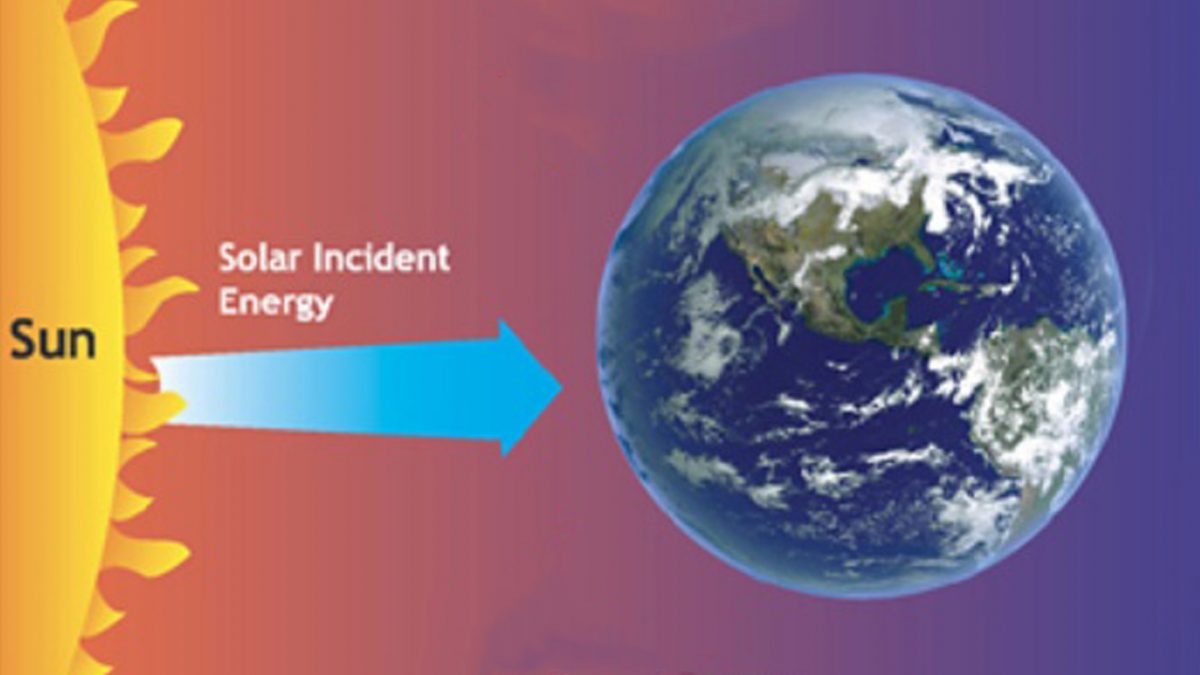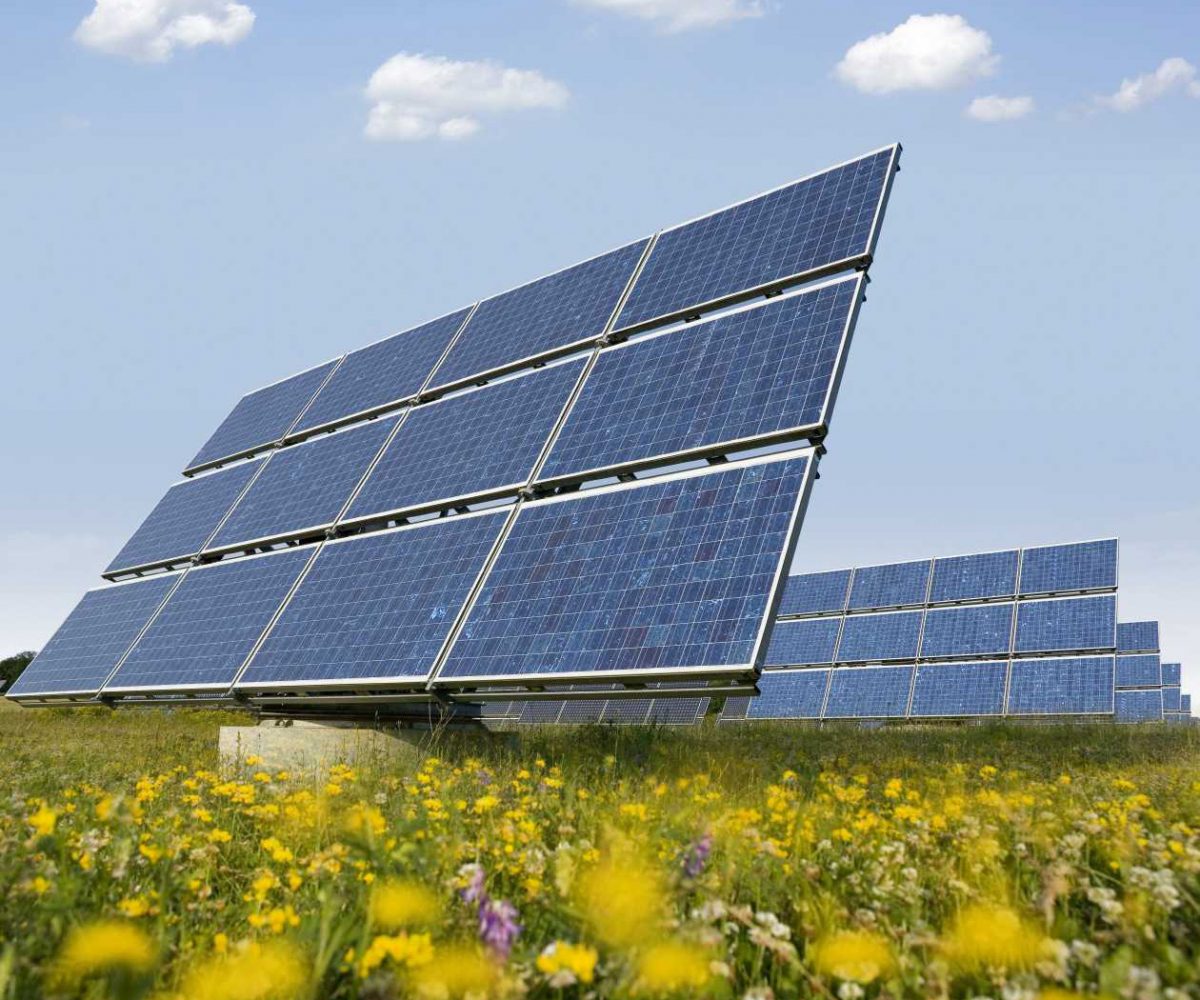The amount of solar energy received by Earth could power a civilization over 100 times larger than ours!

The amount of solar energy received by Earth could power a civilization over 100 times larger than ours!
Or at least that’s the information planetary leader Elon Musk has retweeted, originally published by Twitter account @Rainmaker1973, a verified account with more than one million followers. It reportedly didn’t make Twitter employees cry this time.

This affirmation comes from a thought experiment, claiming that if just 1% of the solar energy that was retrieved from the Sahara via conventional solar panels, it could power the entire world.
The math goes like this: according to some estimates, the world energy consumption is 17.3 Terawatts of continuous power for an entire year. Then, if you cover an area of 208 square miles, it can provide 17.4 Terawatts of power. It takes into account solar panels currently available for roofs, with moderate efficiency.
The Sahara has more than the room for that, since it’s about 5.7 million square miles, and receives sunlight more than twelve hours per day, making the desert a prime location for solar energy harvesting. Even though this would be unarguably costly at about five trillion dollars, this is less than Obama’s bailouts in 2009.
Let’s take a look at what Musk proposes, then.
- A civilization 100 times larger than ours would need 17.3 TW x 100. That is, 1,730 TW.
- According to the original tweet, just 1% of the Sahara would power the Earth. That means, 100% of the Sahara would be able to power the energy of a civilization 100 times larger than ours. The Earth, as Musk surely knows, is much larger than the Sahara.
- Elon Musk is right in saying that the whole Earth could power a civilization over 100 times larger than ours but leaves us wondering exactly how large, considering the whole Earth.
Even though he didn’t bother to delve into the issue further, he makes a valid point worth exploring. Can the current energy crisis the world is facing be solved by solar energy? As it turns out, there are a couple of issues with this concept.
First of all, solar panels have a certain longevity. Typical panels, much like the ones used in the thought experiment, last only 25 to 30 years. Bear in mind this is an average, and climatic conditions can affect them sooner. It’s anyone’s guess how much money would go into maintenance alone, not even to mention the replacement costs every two decades or so.
Besides that, you can’t transport energy from the Sahara to, say, Siberia, without any losses. A typical maximum transmission distance is about 300 miles. To achieve this, the typical voltages for energy transmission go between 155,000 to 765,000 volts. That’s a huge amount of volts! You need to build electric substations for this, which, as you can imagine, are costly.
All this means that while solar energy is a promising source, more technological innovations are necessary to achieve something like what Musk envisions. While there are ideas to solve the issues presented before, we’re still not there.
Luckily for us humans, if we’re subjugated and need to slave away our energy to our 100-times-larger-civilization alien overlords, the Sahara would suffice. The problem comes with civilizations over 100 times larger. Perhaps if it’s just a bit over 100, Musk can contribute with his assets to fill the gap.























So we should expect that mr Must will start invest into solar systems onto Sahara to make more money selling it in Africa or Europa. We are waiting for first step mr Musk.
Not news.
Only theory.
Does not suggest we can afford the population we’ve never been above to feed, clothe, heal and give a give a decent quality of life … before the unsustainable population explosion we’ve seen in the last century.
At what cost in all the resources required to build, maintain and store the solar energy?
I believe in solar and renewables but it’s ludicrous to believe any increase in population can, should be, supported into we reach the point of being able to feed, clothe, heal **everyone**.
Until then, envy and anxiety (racism), inequality (poverty) and inhumanity ( resource wars) will never end.
Garbage in, garbage ouf {GIGO) may not precede AI, bui will probably outlive it.
The amount of watermelon pseud-scientific mambo jumbo is this post is terrible, but than again its that clown Shaun writing. Why is he on this website anyway? This is supposed to be about tech tips that are useful and not propaganda about Gaia cult. What is this? Did Klaus or Bill Gates bought this website or something?
Maybe this would be a less harebrained solution…
The earth’s core is hotter than the sun (5200C).
The core is closer to all points on earth (2900km) – way closer than the sun.
Geothermal heat/energy can be used to produce electricity.
Extraction systems currently exist (proven technology).
Sustainably, as like everything else we take from the earth, is a major consideration.
It’s nonsense. I wrote a Master’s Thesis about twenty years ago debunking a similar article from like 2000 or so, which argued that all of America’s electricity needs could be met by a (I think) 30 mile by 30 mile installation in the Nevada desert.
Not only do we have to consider the factors you mentioned (panel life, transmission losses, etc.), we also have to match supply to demand instantaneously. Electricity use typically rises throughout the morning, peaks in the evening, then falls dramatically at night. The Sahara panels (at around 15 deg longitude) would be blasting out electricity for hours before Europe needs it, before Americans get out of bed, and after East Asians have gone to bed.
So you need either storage or a backup conventional system. In either case, that system would be about as large as all the world’s power plants combined.
And that’s before we get into the materials question. Solar panels are incredibly wasteful at scale. They use immense amounts of high-quality carbon from metallurgical coal, as well as silver and copper, all of which are in limited supply in the grades required for electrical generation, and all of which are in demand for other uses. Then you have the toxic chemicals required. Then you have to consider how to dispose of them at end of life.
And that’s before we get into the energy inputs required to manufacture them, which are large and fossil-powered (industrial electric trucks are not a thing).
And that’s before we get into exactly the same materials and energy-input questions for the chosen storage technology, if you decide to go down that route.
It’s pure fantasy. You could instead convert the entire world to nuclear power and combined-cycle gas, which would use a tiny fraction of the materials and energy inputs required by solar, and you’d have zero- to low-emissions electricity for several decades, which could effortlessly match supply to demand, and which wouldn’t plunge the world into darkness in the event of (say) a sandstorm or a major volcanic eruption.
All for the nuclear idea–have met a number of scientists from Los Alamos who agree; e.g., a nuclear rod in an automobile takes care of fuel needs forever and ever. One problem: What to do with spent rods? Place them in the Sahara?
Even the thought is amazing: “One rod in each home will power all appliances for a multitude of lifetimes and owners.”
“The event of (say) a sandstorm or a major volcanic eruption . . .” Yes, such events may preclude the use of nuclear–events even more drastic that would “crack” rod shells, nuclear generators. Risky.
Obviously, but not so obvious, we can continue with the fossil fuel debacle, but we don’t want to. No, we don’t want to, but we do because the loss of profits would be tremendous. Probably go through global bankruptcy.
I’m okay with the status quo and a few tweaks. Start riding a pedal bike; walk; eliminate those unneeded flights and cruises to wherever; ride-shares; pop a few solar panels on the home; take another walk; stop eating meat; maybe a “flex fuel” automobile; change is easier than we assume.
The little things add up to significant change. One household at a time.
Spent nuclear fuel is really no big deal at all: you can put it in a pool of water for a few years until all the short-lived (ie. most dangerous) isotopes have decayed. The volume, as you point out, is tiny for the amount of energy you get. And best of all, “spent fuel” contains plenty of fissile material that can be reprocessed into fresh fuel. There are even reactors in development that can accept spent fuel from traditional boiling-water reactors.
But it doesn’t have to be nuclear. The point is that renewables are absurdly wasteful from a materials and energy-input perspective, they inherently require expensive backup technologies in order to match supply to demand, they require frequent replacement compared to traditional generation (creating immense amounts of waste and requiring the same materials and energy inputs again), they plausibly have an effect on climate at large scale (by changing albedo or extracting atmospheric energy), and they need huge amounts of land, due to the diffuse nature of the energy sources.
Do they have a place in a modern electrical generation system? The short answer is no, but I wouldn’t want to rule out some edge-case scenario where they may be useful on a micro-scale.
It’s too early, the big corporations haven’t exhausted the oil in order for their next scam to kick in.
I’m 14 and this is deep.
“planetary leader”… Get serious!
Oh yes let’s use land on another continent shared by multiple countries which has abundance of cheap child labour. Of course no point in asking what those in Africa want. Just another slave industry ideas like coffee.
Alternative title: Elon Musk want the population to increase 100 time so he can be 100 times richer.
A better solution would be to reduce the population, leaving more space for wildlife but that doesn’t fit Musk’s irrational desire to make more profit than he could spend in 100 lifetimes, while paying the employees who make it possible a pittance in comparison.
These are bad news for those tyrannical countries that have tons of petrol to sell. Tyrannical countries that have so many interested friends around the whole world. With the silence of the United Nations and other powerful institutions. Thanks for the article.
Let’s NOT talk about free energy at all and keep people distracted about oil versus “green”.
This is the reason we will not see this happen in our lifetimes.